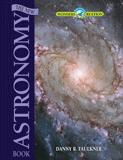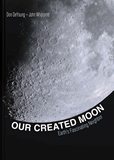Comet ISON—Evidence of a Young Universe
This autumn, we expect a spectacular display in the heavens by Comet ISON. If all goes as anticipated, the scene will be breathtaking—likely even visible during the day! Yet the significance of comets is much more than a spark of brilliance we observe in the sky. Comets like ISON present problems for evolutionists while confirming the biblical account of creation.
What Kills Comets?
Preview Fires in the Sky, currently showing in the Planetarium at the Creation Museum. Visitors can also watch this Planetarium show and learn more about comet ISON during Christmas Town nights this December.
As a sun-grazer, Comet ISON will lose a massive amount of material as it passes close to the sun. This will cause the comet to brighten tremendously, but it comes at a cost: after enough orbits Comet ISON eventually will lose so much matter that it won’t brighten anymore.
In addition to gradually wearing out, two more catastrophic loss mechanisms can ravage comets. First, as comets pass close to the major planets (especially the gas giant Jupiter), the gravity of those planets can alter comet orbits. When this happens, half the time the comet orbit decreases in size and orbital period, which causes the comet to wear out even faster. But the other half of the time comets have their orbits increased. Sometimes the increase can lead to ejection from the solar system, never to return. Astronomers have observed comet ejection a number of times. Second, comets occasionally collide with planets, thus abruptly ending their existence. We observed this for the first time in 1994 when Comet Shoemaker-Levi IX slammed into Jupiter.
No Evidence for New Comet Formation
In Universe by Design, Dr. Danny Faulkner plainly shows that advanced science argues more for a created cosmology than a big bang. (Also available to read online.)
With these efficient loss mechanisms, it is clear that we should not see any comets at all, if the solar system is billions of years old. So, for more than 60 years many astronomers have offered two hypothetical sources to replace older comets as they die.
There are two types of comets: long-period comets and short-period comets. As the names suggest, the two groups generally differ by the lengths of their orbital periods (200 years is the dividing line), though there are other more fundamental differences. Long-period comets supposedly come from the Oort cloud, a hypothetical spherical cloud of comet nuclei orbiting very far from the sun. The gravity of an occasional passing star is supposed to rob the comet nuclei of energy so that they fall into the inner solar system where we can see them. Short-period comets supposedly come from the Kuiper belt, a flatter distribution of comets just beyond the orbit of Neptune. Gravitational tugs from the outer planets are thought to bring these comets into the inner solar system.
Comets—Evidence of a Young Universe
We’ve never seen the Oort cloud, and we likely never will. So there’s zero observational evidence that the Oort cloud exists. Astronomers have found many objects beyond the orbit of Neptune, about where the Kuiper belt is supposed to be. But it isn’t clear that this actually is the Kuiper belt, because these objects have a different composition than comets.
Evolutionary scientists have to assume that both the Kuiper belt and Oort cloud exist because otherwise comets—and the universe—are much younger than the supposed billions of years. But if the solar system is only thousands of years old, as God’s Word clearly teaches, there is no problem. The Creation Museum’s new planetarium show Fires in the Sky discusses this and much more.
For More Information
Recommended Resources

Answers in Genesis is an apologetics ministry, dedicated to helping Christians defend their faith and proclaim the good news of Jesus Christ.
- Customer Service 800.778.3390
- © 2024 Answers in Genesis






